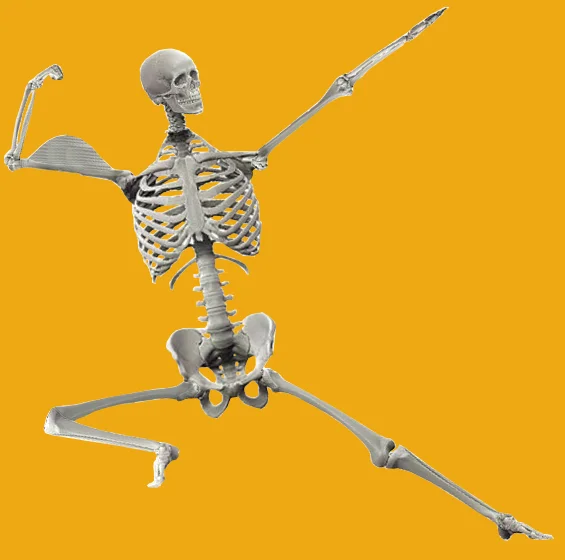Bone: Nature's Brilliant Designs
You have over 200 bones in your body making up over 350 joints. Mechanical forces, particularly those generated by your muscles, are essential for your bones development as well as the maintenance of their strength and shape. Following-on from my previous article: "A better understanding of Osteoarthritis may help You Enjoy Life Pain Free", here we'll briefly look at some of your bones' brilliant design features.
Nature demands maximum strength for minimum energy
Mother nature demands efficiency and your bones are brilliant examples of her ingenious engineering capabilities. She produces bone of maximum strength for minimum energy expense. This is achieved partly by the excellent building materials used, collagen hardened by a calcium cement (calcium-phosphate mineral complexes), and their clever architectural design.
The “hollow” design of your bones requires minimal material, keeping them lightweight. So minimal energy is chewed up moving your bones around, yet they are strong enough to withstand the huge compressive forces you place on them without crumbling. For instance, your thighbones easily supports up to eleven times your body weight that goes through them when running flat-out.
Your bone adapts to changing demands
Working with the principle of energy efficiency, your body has precise mechanisms to regulate the strength of bone. This means that when the levels of force acting on your bone increase above their usual range, as in starting an exercise régime, the "builder" cells in your bone are triggered into action and start the process of growing stronger bone.
On the other hand, when your bones are deprived of mechanical stimulation, for example when being bedridden for an extended time due to illness, or even with a sedentary lifestyle, your unused bone tissue is removed (up to a certain point!). This is part of your body’s extraordinary efficiency in not wasting your precious energy on unused tissue.
Exercising can dramatically increase the strength and size of your muscle relatively fast, and your bone builds up as well, but, it takes longer and is less dramatic. To illustrate, a study found that during a 12 month exercise program involving jumping on the spot, bone strength changes were barely noticeable at three months but at the end of 12 months the thigh bone significantly thickened by 0.2% and bone mineral density or strength increase by 3%.
Bone remodelling
Your bone is removed and then replaced throughout your lifetime more or less continually, a process called bone ‘remodelling’. On average, about twenty percent of bone is remodelled annually, so that none of your bones are older than five years. Remodelling also repairs micro-damage, bone fractures and sculpts the shape of your bones, for better or worse (namely bone spurs and cysts) largely depending on the forces acting on your bones.
A change in bone shape comes about because increased forces stimulate a build-up of bone at the points of stress, while reducing the forces acting on bone stimulates removal of bone. It’s important to bear in mind that your muscles generate the vast majority of the forces acting on your bones and joints.
In this way, the bowed legs you were born with were re-sculptured into the remarkably different shape they are today because as you began to walk, and later hopped, skipped, jumped, and ran, they experienced radically different forces than when you were in your mother’s womb. Ground reactive forces, gravity and especially the forces generated by your muscles stimulated bone growth where it was needed, while un-stimulated bone was resorbed.
In the same way, when you began crawling, by raising your head into extension you caused your neck’s vertebral bones to slowly change shape, giving your neck its inward curve. As you began to walk, the forces acting on your lower backbones gradually re-sculptured them, giving your lower back its inward curve.
Improper mechanical forces leading to bone developmental problems can occur throughout your lifetime, even in-utero. For example, as many as one in sixty babies are born with hip joint instability, malformed or even “dislocated” hips significantly due to a lack of the right amount of pressure and contact between the cup and ball of the hip joint associated with kicking and movement. Around ninety per cent of these spontaneously correct within the first two months of life, or sometimes with the use of double nappies, which improve contact within the joint providing the necessary forces that stimulate proper shape development. Towards the other end of life, osteoarthritis is a growing problem in an aging population.
Take home message
From the womb to the grave mechanical forces are essential "nutrition" for your bones. The right amount of pressure throughout your life is mandatory for proper development and healthy maintenance of your bones. Too little or too much pressure results in poor tissue formation leading to problems including pain, dysfunction or disability. Fortunately, you have complete control over one of the largest determinants of the health of your bones, joints and other load bearing tissues – your muscle activity.



